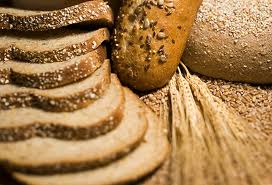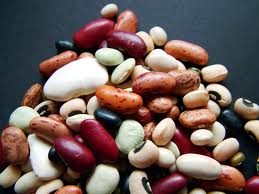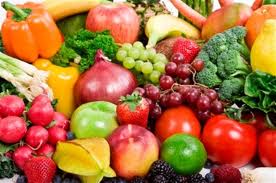
Fiber Rich Food
Fiber Rich Foods
Fiber rich food is very essential for the body and should be included into our daily diet. Consuming nutritious fiber rich foods is a great way to improve our digestive system and fiber rich food also helps in lowering the levels of cholesterol in the body. It is found that, foods that have high fiber content are generally a good source of essential nutrients as well.
.png)
When we eat foods such as fruit, vegetables, bran muffins and cereal, we are taking fiber into the body. Fiber is a complex carbohydrate that is not digested. It also cannot be absorbed into our blood. The fiber in our food comes from plants. There are two different types, insoluble and soluble fiber. Soluble fiber, as its names suggests, is fiber that dissolves in water.
Soluble fiber is the type that is thought to lower cholesterol. We can obtain soluble fiber by eating oatmeal, barley, citrus fruits and dried beans. Having a high fiber diet that contains soluble fiber is thought to help with weight loss. This is because after eating foods containing this type of fiber you will be left feeling full for a greater length of time. Insoluble fiber includes the skins of vegetables and also wheat bran. It is more commonly known as roughage.
The advantage of including roughage into a high fiber diet is that it helps in preventing colon cancer. Insoluble fiber has also shown great benefits in helping to prevent diverticulitis.
Grains

Grains are some of the very best sources of fiber. They are also rich in vitamins and minerals and low in fat and sodium, making them healthy additions to your diet. According to the Wheat Foods Council, just 1 oz. of wheat bran cereal contains 8 grams of fiber. Whole grains like bulgur and barely add 3 to 4 grams of fiber per 1/2 cup. If you eat foods like pasta and bread, switching to whole wheat versions will increase your fiber intake. A slice of whole wheat bread contains 2 grams, as does a whole wheat tortilla. Whole wheat spaghetti provides over 3 grams per half cup. The AHA recommends eating more whole grains rather than processed grains for their increased fiber and nutrient content.
Beans

Beans rival grains in their fiber content. For example, just 1/2 cup of kidney beans gives you 8.2 grams. Lentils contain 5 grams per half cup. A similar sized serving of split peas has 4.4 grams. Not only are beans high in fiber, but they are also high in nutrients like iron and protein and low in fat. Because of this, you can use them in place of meat in many of your recipes to reduce the fat content. Try sprinkling beans into soups and salads or using them instead of ground beef in tacos or chili.
Fruits and Vegetables

Pretty much all fruits and vegetables provide some fiber, but some have more fiber than others. One of the fruits that contain the highest amount of fiber is the prune. A half cup of stewed prunes has 4.5 grams of fiber per serving. Oranges and apples with the peel still on provide about 3 grams of fiber each. A 1/2 cup of strawberries will give you 2 grams. When it comes to vegetables, broccoli scores high at 2.3 grams per 1/2 cup. Carrots have the same amount, but you can add more fiber by keeping the peel on. A medium tomato has about 1.3 grams. Other excellent sources of fiber include cabbage, green, leafy vegetables like collards and kale and Brussels sprouts.
